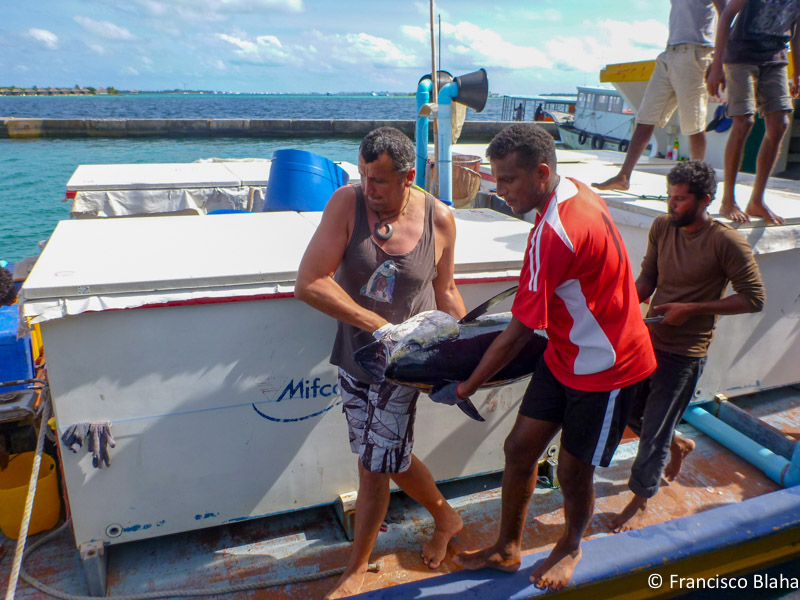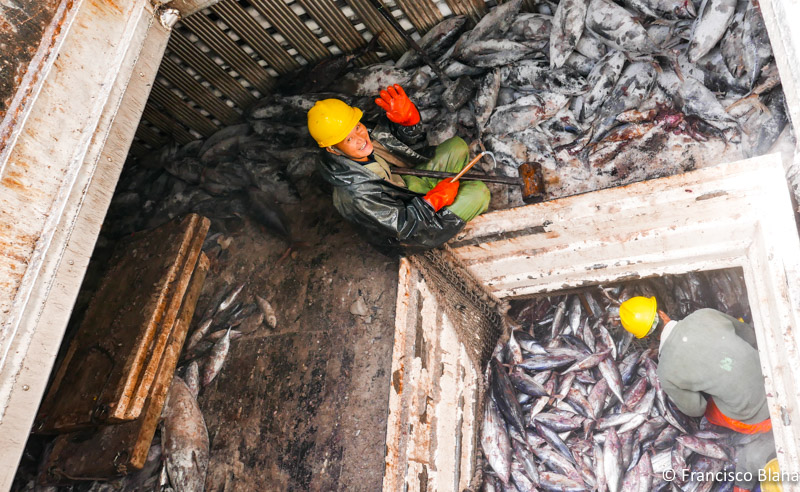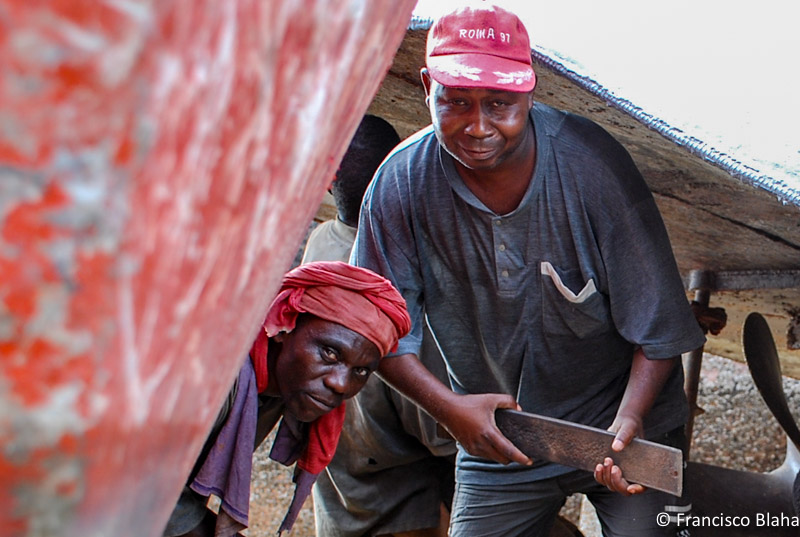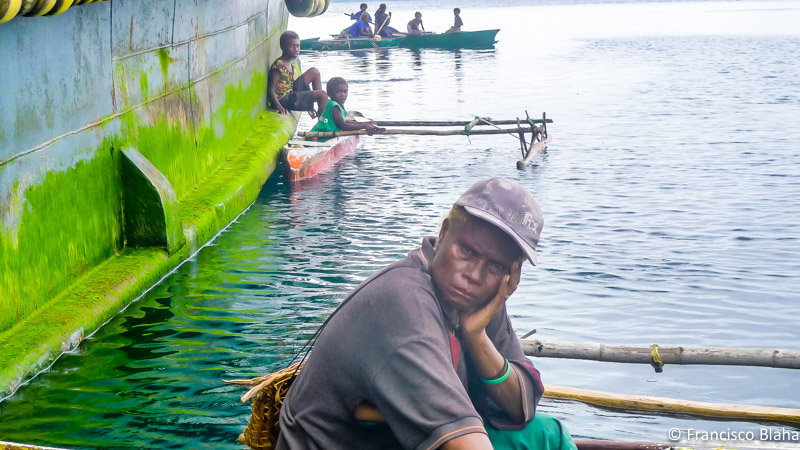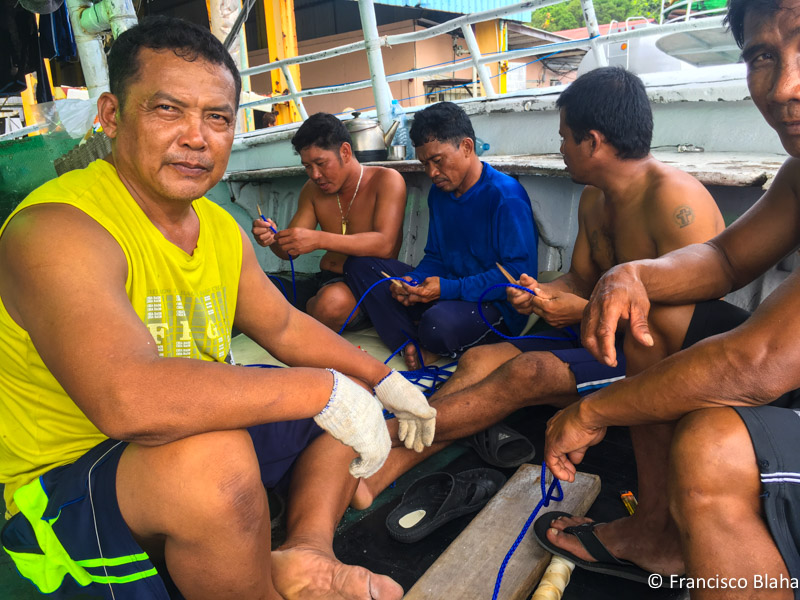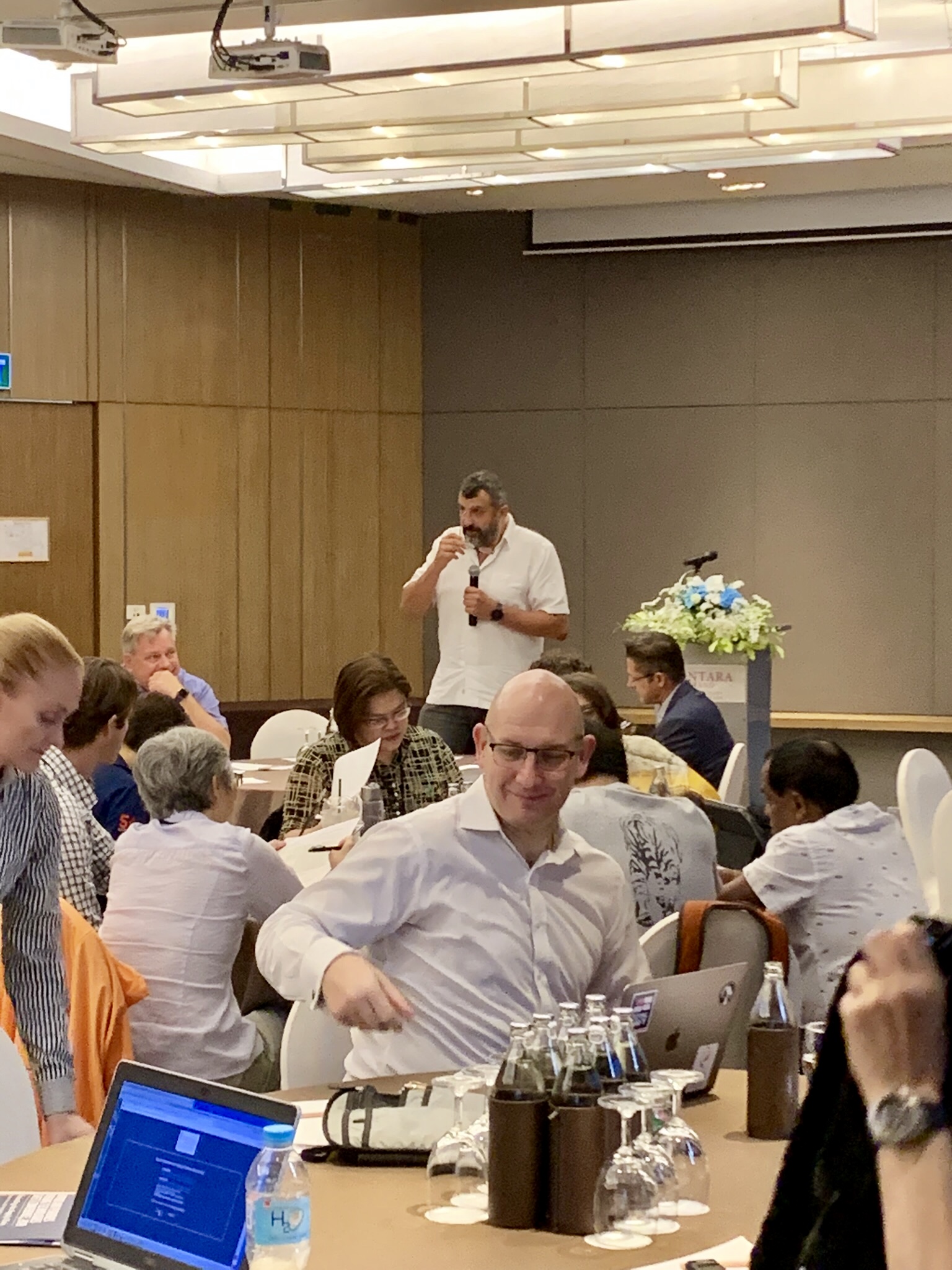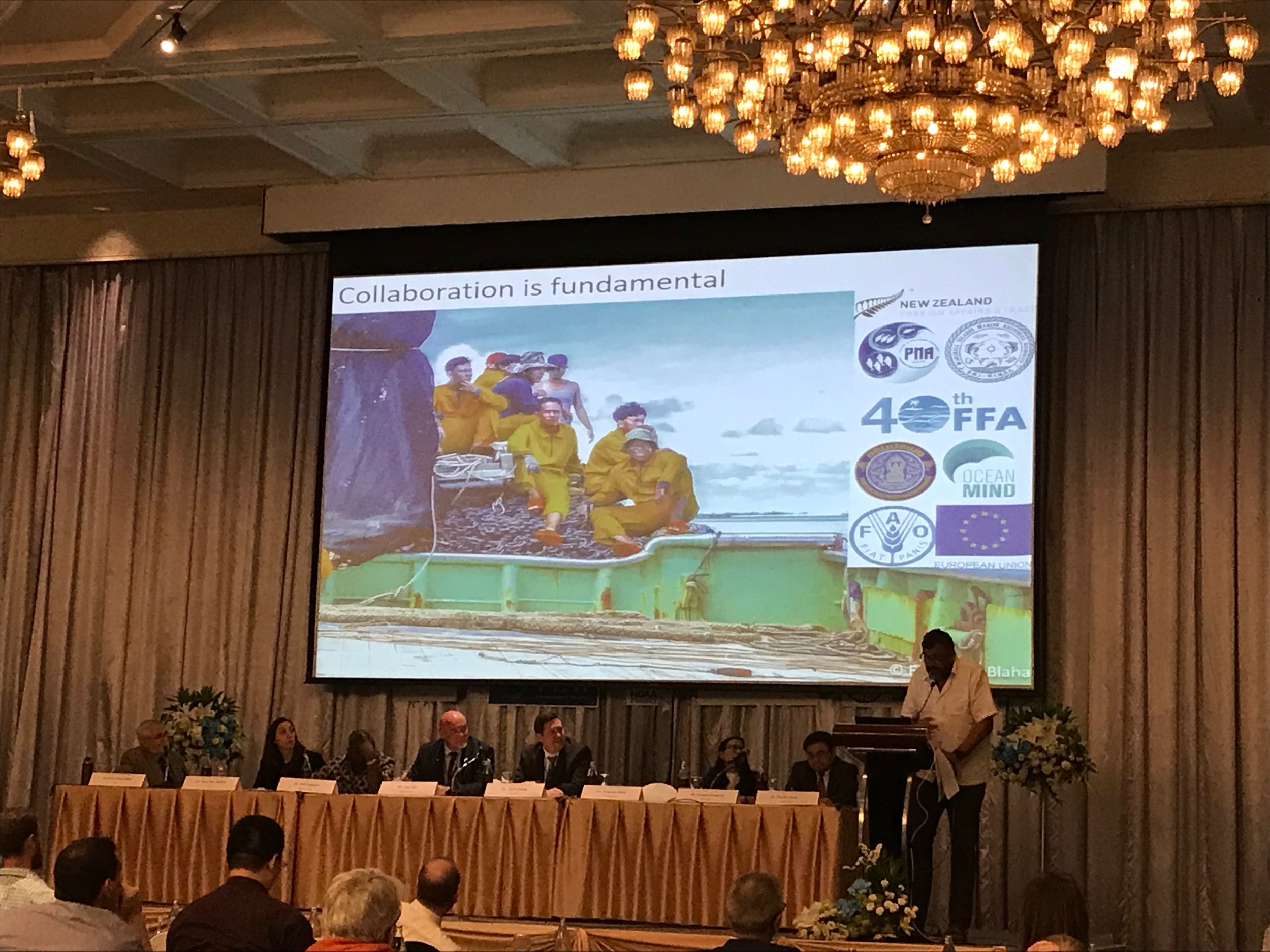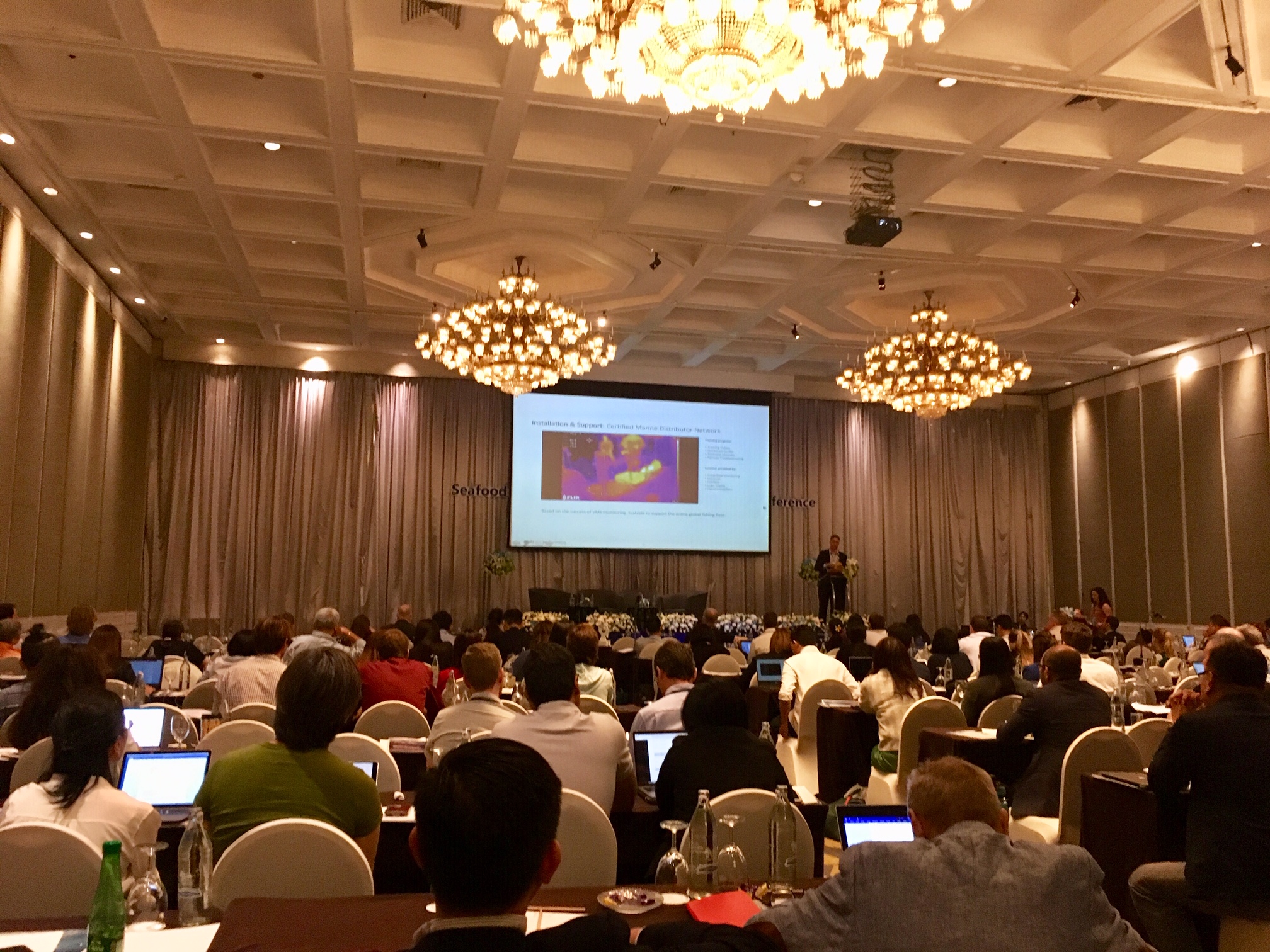Chemoreception
The olfactory and gustatory systems comprise the major chemosensory pathways in fish (Hara 1994). Their detailed morphologies differ considerably among species, reflecting adaptations to a wide range of environments and evolutionary pathways. Thus, the gross morphology and functions given here for the olfactory and gustatory systems should be accompanied by rereading the reviews of e.g. Hara (1992, 1994, 2011) and Hino et al. (2009).
Olfaction is facilitated by two paired nostril structures in the snout of the fish, each of which has an anterior inlet and a posterior outlet. Various mechanisms (forward movements, currents, respiratory pressure changes) cause water to flow through these channels, and waterborne chemicals are detected by the specialised bipolar neurone receptor cells of the nasal mucosa (Zeiske et al. 1992). Signals from these receptor cells are transferred directly via the cranial nerve I to the olfactory bulb of the brain, where the information is processed (Hara 1992).
Taste buds form the structural basis of the gustatory system. They can be found on the lips, in the oral cavity, the pharynx, on the barbels, fins, gills and sometimes, as in scaleless catfish, all over the body surface. Chemical information detected by these specialized epithelial cells is transmitted to the central nervous system by the cranial nerves VII (facial), IX (glossopharyngeal), and X (vagal).
As both olfactory and gustatory senses are mediated by waterborne low-molecular compounds (sometimes the same ones), it can be difficult to identify the specific role played by each of the senses in the propagation of a specific behaviour. Although care should be taken with generalisations, some features of each of the systems seem to be consistent over a wide range of species.
Based on its lower detection thresholds (Johnstone 1980; Ishida and Kobayashi 1992), olfaction is believed to initiate food search behaviour for a wide variety of odours, while the gustatory system seems to be more selective and provides the final sensory evaluation (i.e. odours may trigger food search, however the gustatory system may reject the object after tasting it) (Kasumyan and Døving 2003).
Chemical stimuli
Chemical stimuli and chemoreception are of particular importance for the detection and location of small, stationary food items such as baits. Fishing with bait (i.e. longlines and pots) is common in deep waters, during the polar winter and in habitats of high turbidity, all of which are conditions with limited visibility.
A chemical stimulus, as opposed to visual and acoustic stimuli, has two properties that are crucial for the use of bait to capture fish. First, a chemical stimulus disperses over long ranges and can be detected by fish from very long distances. For example, longlines baited with mackerel have been shown to attract cod (Gadus morhua) from a distance of 700 m (Løkkeborg 1998). Another behavioural study indicated that sablefish (Anoplopoma fimbria) were capable of responding to odours from squid baits at a distance of several hundred metres (Løkkeborg et al. 1995). In contrast, both visual and acoustic (except low-frequency sounds) stimuli attenuate rapidly. Second, a chemical stimulus lasts for a long period of time, whereas visual and acoustic signals fade immediately after being transmitted. Cod that responded to baits from a distance of 700 m located the baits 7h after the longline was set, showing that bait odours last for many hours (Løkkeborg 1998).
These two properties are unique to chemical stimuli, and form the basis of longlining as a stationary fishing method that has long spatial and temporal ranges. In the develop-ment of new and more efficient alternative baits it is important to take these distinctive features of longline fishing into account.
Olfactory food-search behaviour and odour source location
The fact that fish are able to detect and respond to baits from a long distance means that they must have a functional mechanism which enables them to locate odour sources. Unlike visual and acoustic signals, chemical stimuli have no directional cues associated with its chemical signature. The particle motion component of underwater sounds is a vector quantity that provides the basis for directional hearing in fish (Hawkins 1986), whereas odours carry no directional information per se. Thus, upon entering a bait odour source, the fish depends on additional cues and employs several sensory modalities.
The current is the main agent for dispersion of chemicals in seawater because the rate of diffusion in water is very low. Thus, aquatic organisms that are activated by chemical stimuli need to move upstream to locate the stimulus source (Atema 1980). Rheotaxis is a behavioural orientation to water currents, and chemically stimulated rheotaxis is regarded as the most likely mechanism used by fish and crustaceans to locate odour sources (Carton and Montgomery 2003; Løkkeborg et al. 2010). There is evidence that rheotaxis in fish is mediated by the lateral line system (Montgomery et al. 1997), and studies have demon-strated the use of both olfactory and mechanosensory systems in olfactory search behaviour (Baker and Montgomery 1999; Baker et al. 2002).
Field observations of several species have demonstrated that fishes often approach an odour source downstream of the release point (Ferno et al. 1986; Løkkeborg et al. 1989; Løkkeborg and Ferno 1999). Behavioural field studies that used acoustic transmitters to monitor the movements of cod showed that cod that encountered a bait odour plume downstream located the bait twice as often as cod that were upstream and out of range of the plume, indicating the importance of chemically mediated food searching (Løkkeborg 1998).
Gradient search, where the animal reacts to a concentration gradient that increases as the distance to the odour source decreases, has been suggested as an alternative mechanism to locate odour sources. How-ever, this explanation is less likely because turbulence often renders gradients weak and inconsistent, and thus creates a highly intermittent and complex chemical signal (Webster and Weissburg 2001; Carton and Montgomery 2003).
The mechanisms that fish use to locate baited gear have important practical consequences for longline gear operations, e.g. how baited longlines are set in relation to the current direction and tidal cycle.
Visual food-search behaviour
In spite of the general poor quality of underwater images, most fish species depend on vision as one source of sensory information (Guthrie and Muntz 1993). Detection of a prey item requires the predator to detect a difference in contrast between the prey and its background. Because seawater absorbs long and short wavelengths more than intermediate wavelengths (i.e.430 and 530 nm) (Jerlov 1968), light becomes monochromatic at moderate depths (Lythgoe 1975). Thus, brightness and contrast tend to be the determin-ing factors of visibility under water (Hemmings 1965; Lythgoe 1975).
Visual detection depends on several factors such as the fish’s visual capacity, the physical/optical charac-teristics of the environment (light intensity, wave-length composition and turbidity) and prey characteristics (size, movement, contrast and colour). Behavioural studies have shown that the distance from which an animal responds to an object increases with increasing light intensity (Vinyard and O’Brien 1976; Confer et al. 1978), but at a progressively decreasing rate as light saturation is reached (i.e. a log–linear relationship) (Utne 1997). Particles in the water (i.e. turbidity) absorb and scatter light, and the visual range decreases with increasing turbidity in a log–linear relationship (Vinyard and O’Brien 1976; Gregory and Northcote 1993; Utne 1997).
Coastal waters contain relatively long wavelengths (appearing green to yellow) due to high levels of decaying organic matter, silt and suspended particles, which absorb shorter wavelengths, while oceanic waters (low in particles) transmit mainly shorter wavelengths therefore appearing blue (Jerlov 1968). A fish will see much more sharply (better contrast) if it is more sensitive to that part of the spectrum that water absorbs least. Thus, the spectral sensitivity of the visual pigments in fish is related to their habitat, the depth at which they live and the visual tasks of the species (Lythgoe 1984). Coastal species have visual pigments with peak absorption in the green part of the spectrum, while the pigments of oceanic and deepwater fish have peak absorption in the blue (Denton and Warren 1956; Munz and McFarland 1977). Studies have shown that a small shift in the peak wavelength of the available light can have significant effects on prey detection (Utne-Palm and Bowmaker 2006).
Fish use rod vision (grey-scale vision) at night and cone vision (colour vision) during daylight hours. Thus, to improve interest in and detection of a prey or bait, we need to consider (1) when the species is most active (a nocturnal, diurnal or crepuscular hunter), and (2) on the basis of its peak in activity, which colour will offer the best contrast to the background lightning.
Fish probably evolved colour vision to enhance contrast (McFarland and Munz 1975), and the prey colour therefore affects the maximum reaction distance (Utne-Palm 1999). Knowledge of the visual pigments of the target species (i.e. the spectral sensitivity) and the spectral range of its prey and its environment are thus of great importance. For best visual detection, we should therefore choose a bait/lure colour that matches the dominant wavelength of the fishing depth.
Theoretically, a greater maximum detection distance should be expected for larger prey, as larger prey will stimulate more of the retina (Lazzaro 1987), and experimental studies have shown that prey size has a positive effect on reaction distance (Vinyard and O’Brien 1976; Utne 1997). The visual capacity of fish has also been shown to be size-dependent, as visual range is found to increase as fish grow (Hairston et al. 1982; Breck and Gitter 1983). A larger eye has better acuity because both the lens and retinal cone density increase with size (Hairston et al. 1982). Furthermore, the lens of a larger eye is located further from the retina, which increases image size (Easter et al. 1977).
Many marine species, including crustaceans, cephalopods and fish, can detect and respond to polarised light (Cronin and Shashar 2001; Kamermans and Hawryshyn 2011; see also Shashar et al. 2011). Polarisation can be beneficial in three general areas that are relevant to behavioural manipulation of fish in relation to prey capture: (1) contrast enhancement, (2) visual communication (social interaction), and (3) spatial orientation and navigation (Kamermans and Hawryshyn 2011). Shashar et al. (2000) showed that polarisation of light reflected from fish scales helps cuttlefish to detect their prey, and suggested that polarisation vision is used to break the counter-shading camouflage of light-reflecting silvery fish. Juvenile rainbow trout (Oncorhynchus mykiss) also use polarised light to enhance detection of planktonic prey (copepods) (Flamerique and Browman 2001).
UV light (360–400 nm) may also have a positive effect on visual detection. When ultraviolet light shines on a fluorescent substance, the substance absorbs the light and re-emits it, in most cases, at a longer wavelength, which makes it visible to targets that cannot see UV light. Although it is rapidly attenuated in water, sufficient intensity remains in clear water to sustain vision at depths of 100 m and beyond (Losey et al. 1999).
Movement is another factor that is known to have a positive effect on prey detection. Many studies have shown that prey activity or movement increases prey detection distance (Wright and O’Brien 1982; Howick and O’Brien 1983; Holmes and Gibson 1986; Crowl 1989: Utne-Palm 1999). Prey movement has also been found to have a positive effect on a predator’s willingness to attack (O’Brian et al. 1976; Rimmer and Power 1978; Scott 1987). In a goby species (Gobiusculus flavescens) prey movement was the determining factor for whether or not an attack was induced after prey detection (Utne-Palm 2000).
A field study on hooking behaviour showed that haddock (Melanogrammus aeglefinus) which were hooked and struggled to escape were subsequently attacked by larger cod (Løkkeborg et al. 1989). This type of attack is not only triggered by increased visual stimulation, but also by greater motivation to attack a struggling or wounded prey.
Mechanoreception and food-search behaviour
All fishes have a mechanosensory lateral line system which is specialised for the detection of water disturbances. Due to the viscosity and density of water, disturbances created by the presence of potential prey and other moving objects are detected via mechanoreception. However, the operational range of the lateral line system is usually restricted to one or at most two body lengths from the object (Kalmijn 1988). The importance of lateral-line-mediated behaviour is likely to increase in deep waters and habitats of high turbidity.
The capability and importance of the lateral line system are most obvious in behaviours related to predator/prey interactions and orientation (Montgomery et al. 1995). Stationary objects such as baits do not create disturbances that resemble those of moving prey items. However, Montgomery et al. (1995) demonstrated an advantage of predatory fish facing upstream as immobile prey sitting on the bottom could still be located, presumably by the downstream perturbations they created. This observation indicates that the lateral line system may assist food-searching fish in locating a stationary bait odour source.
The lateral line system is also believed to play an important role in orientation. Fish that maintain visual or tactile contact with the substrate could in principle use the lateral line to determine current direction and strength (Montgomery et al. 1995). Baker and Montgomery (1999) demonstrated that the superficial lateral line system controls rheotaxis insofar as pharmacological blockade of the neuromast receptors reduced the rheotactic response. Mechanoreception thus plays an important role both in upstream odour search and in the final location of odour source
Feeding motivation
Fish do not feed continuously, but in distinct bouts or meals (Jobling et al. 2010). Food deprivation has been shown to affect food searching behaviour and responsiveness to prey in several fish species (Atema 1980; Pearson et al. 1980; Hart and Connellan 1984; Hart 1986). Sablefish responded to lower bait odour concentrations when tested after 4 days of food deprivation, compared to when fed to satiation (Løkkeborg et al. 1995). Also response intensity (swimming speed and turning rate) and the duration of the response to bait odour increased in sablefish with increasing food deprivation (Løkkeborg et al. 1995; Stoner and Sturm 2004). These effects of hunger state affect the distance from which fish start a food search, the search pattern itself, location time and time spent searching for the odour source. Thus, as hunger increases, fish intensify their search behaviour.
Longline fishermen have experienced extremely low catches of cod in the Barents Sea in early spring when the cod are preying on dense schools of capelin (Engas and Løkkeborg 1994), and fishermen from the Faeroe Islands have observed lower catch rates in years of high prey density (Steingrund et al. 2009). Similarly, longline tuna catch rates were low in areas of the tropical Pacific where prey densities were high (Bertrand et al. 2002).
Changes in feeding motivation occur over a wide range of time-scales, from minute-to-minute adjust-ments made during the course of ingesting a meal to the large changes in food intake that are associated with life history events, e.g. maturation (Jobling et al., 2010). Changes in feeding motivation can also be rhythmically adapted to daily, tidal or annual cycles (Jobling 1994; Houlihan et al. 2001; Jobling et al. 2010). Food intake and the strength of response to baits have been shown to be low during the spawning period, which may reflect seasonal variations in feeding motivation (Ferno et al. 1986; Løkkeborg et al. 1989).
Temperature
Within a normal range of physiological tolerance, temperature can have significant effects on activity, swimming speed, feeding and other fundamental behaviours relevant to baited fishing gears (Stoner 2004; Løkkeborg et al. 2010). The swimming activities of most fish species increase with rising temper-ature (within limits) (Castonguay and Cyr 1998; Stoner 2004). Food intake normally also increases with temperature, leading to stronger responses to baited gear and a higher probability of being caught (Brett 1979; Stoner 2004; Løkkeborg et al. 2010). Temperature can also have an effect on taste preferences in fish. For example, grass carp (Ctenopharyngodon idella) displayed different preferences for the same food items in warm and cold water (Adamek et al. 1990). Furthermore, temperature can affect feeding periodicity in fishes (Fraser et al. 1993). The catchability of baited gears may therefore be strongly affected by temperature through a variety of mechanisms (Stoner 2004).
Diel rhythm, light level and seasonal feeding patterns
Cod and several other species exhibit a diel rhythm in swimming and feeding activity (Eriksson 1978; Thorpe 1978; Jørgensen and Jobling 1989; Løkkeborg et al. 1989; Løkkeborg and Ferno 1999). In autumn the swimming speed of adult cod, which was assumed to reflect food search behaviour, increased at dawn, remained high during the day, then gradually decreased during the evening, and remained low throughout the night (Løkkeborg and Ferno¨ 1999).
A fishing experiment performed in a commercial fishery showed that longlines set before dawn caught twice as much haddock as those set later in the day (Løkkeborg and Pina 1997). Changes in food intake according to the phases of moon have also been reported, with food intake peaking a few days before the new and full moon (Leatherland et al. 1992; Kuparinen et al. 2010). Light level, mediated by vision and contrast, can have direct effects on behaviour patterns like activity, swimming speeds and feeding propensity.
Several economically important fish species have low light thresholds for visual feeding (Stoner 2004), but many species have been shown to be relatively unsuccessful in locating and attacking baits in the dark (McMahon and Holanov 1995; Ryer and Olla 1999; Stoner 2003). The locomotory activity of Pacific halibut (Hippoglossus stenolepis), as observed in an experimental laboratory study, was higher at high, rather than low lights levels, and the fish located a larger proportion of the baits offered as the light level increased (Stoner 2003). Thus, light may have a direct effect on longline catchability, and light conditions can lead to differ-ences in catch rates independent of diel rhythms (Stoner 2004).
Seasonal variations in feeding related to changes in the photoperiod have also been demonstrated in several fish species (Villarreal et al. 1988; Karas 1990; Sæther et al. 1996). In general, food intake increases with the lengthening of the photoperiod in spring, and decreases as it shortens in autumn (Komourdjian et al. 1976; Higgins and Talbot 1985). Cod displayed a longer period of high activity during the day in September than in December (Løkkeborg et al. 1989). Seasonal effects on food intake have also been documented in salmonids. For example, anadro-mous Arctic charr (Salvelinus alpinus alpinus) feed intensely and grow rapidly during a short period of their summer residence in the sea and return to fresh water during the winter, when they do not usually feed (Jørgensen et al. 1997).
Water currents
Currents are of great importance to fishing with baits in three ways. First, currents are the most important agent for dispersing olfactory cues in seawater, and a long odour plume can only be created when the current velocity is above a certain minimum. Ferno et al.(1986) reported higher responses to bait in whiting (Merlangius merlangus) during periods of current compared to periods of still water. Second, current direction provides an important cue that guides upstream movement towards an odour source. Third, the current can have a direct impact on the food-search strategy in fish due to its effect on swimming activity.
As food-searching fish swim predominantly upstream to the odour source, it would be energetically advantageous to be active during periods of moderate or low current velocity, and to remain in shelter when the current is strong. Løkkeborg et al. (1989) showed that when currents were more rapid than 18 cm s-1, the number of cod and haddock attracted to bait was three times less than periods of weaker currents.
Tidal currents can also affect the vertical distribution of cod and haddock (Michalsen et al. 1996). Tidal rhythms in feeding activity are often related to vertical and horizontal movements of prey that use tidal currents to migrate (Gibson 1992). An example of tidally synchronised feeding rhythms is the killifish (Fundulus sp.), in which gut content varies in parallel with the tidal cycle (Wiseberg et al. 1981).
Physical properties of the bait
Bait size
Fish feeding in a habitat with a mixture of natural prey of different sizes will often show a preference for a certain prey size (Bjordal and Løkkeborg 1996). Bait size has been shown to have a significant influence on both size selectivity and catching efficiency in long-lining for cod and haddock (Engas and Løkkeborg 1994; Johannessen et al. 1993). Johannessen (1983) showed that the size-selection effect was most pro-nounced in cod, in that larger baits caught only a few small cod, while small and large baits caught approx-imately the same number of large fish. The same tendency was demonstrated in haddock, but the size-selection effect was less pronounced in this species as larger baits also caught some small haddock.
This difference between cod and haddock may be related to their different responses to baited hooks (Bjordal and Løkkeborg 1996). Haddock usually nibble small pieces of the bait while the rest of the bait and hook are outside the mouth. As haddock often make several attacks on the same bait, the bait becomes smaller and the fish may finally bite the hook and be caught. This behaviour explains why the size-selection effect of bait size is less pronounced in haddock, and also why smaller baits are more efficient than large baits. Cod, on the other hand, suck the whole bait into their mouth, and small cod do not respond to or attack larger baits (Bjordal and Løkke-borg 1996). This difference in responses to longline baits can be explained by differences in natural foraging behaviour, with haddock generally feeding on small stationary benthic organisms and cod on mobile prey, which demand more vigorous responses (Løkkeborg et al. 1989).
Reducing the proportion of small fish in longline catches by increasing bait size will increase total bait consumption. Because bait prices have greatly increased in the course of the past decade, this strategy would lead to a significant increase in bait costs. An alternative solution to this problem has been sought by using an inedible body on the longline hooks (Løkkeborg and Bjordal 1995). Hooks with a plastic body attached and baited with mackerel caught a lower proportion of undersized haddock than hooks with mackerel bait only. In the development of alternative bait types, we need to consider ways of increasing bait size without increasing costs.
Shape, texture and physical strength
Once the fish has encountered the baited hook, the shape of the bait may also affect the likelihood of it attacking and ingesting the bait. Fish show a preference for certain prey types which may be related to the formation of a ‘‘search image’’ (Dawkins 1971; Krebs 1973). The ‘‘search image’’ concept implies that a foraging animal bears an image of the object sought, reacting only to certain diagnostic cues (e.g. shape) that are used in the search (Hart 1986). In a fishing experiment for cod, rectangular shaped shrimp-flavoured artificial baits produced lower catch rates than natural shrimp bait and the difference in catching efficiency was explained in terms of the ‘‘search image’’ concept (Løkkeborg 1990a).
Fish also show a restrained response towards attacking a novel prey item. Three-spined sticklebacks (Gasterosteus aculeatus) and rainbow trout exposed to a new prey species required several exposures before they approached the novel prey (Beukema 1968; Ware 1971). Similarly, field observations of cod showed that only 5 % of individuals approached mackerel baits, which can be regarded as a novel prey (i.e. the baits were cut in pieces) (Løkkeborg et al. 1989). The shape of the bait is thus a parameter to be considered in efforts to develop new baits.
Some species use texture to elicit ingestion, thereby sorting prey items from less palatable or inedible objects (Atema 1980). Cod feeding on bivalves were seen to make a series of rapid movements of the head as they tried to shake mussels out of their shells (Brawn 1969). Thus after initially having ingested the bait, fish may spit it out of the mouth due to its unpleasant texture. Comparing natural squid bait with squid bait put in a nylon bag (Løkkeborg 1991) gave reduced catch rates for cod and haddock, and this effect was explained by the more limited swallowing responses caused by the texture of the nylon bag.
In addition to its chemical and visual properties, the efficiency of a longline bait is determined by its physical strength and ability to remain on the hook throughout the soak period (Bjordal and Løkkeborg 1996). Squid is regarded as an efficient bait for catching cod, possibly due in part to its physical strength. Among the factors that may cause loss of bait are the line-setting process, seabirds, benthic scavengers and target fish taking the bait without getting hooked. A reinforcement may be incorporated into an alternative bait in order to reduce losses, but may have a negative effect on catching efficiency.
Hooks



